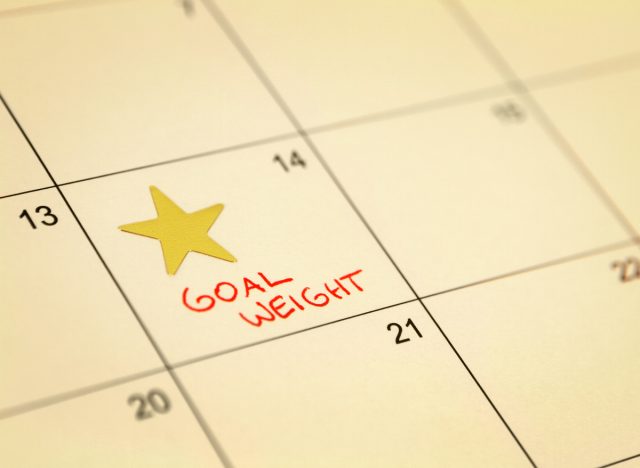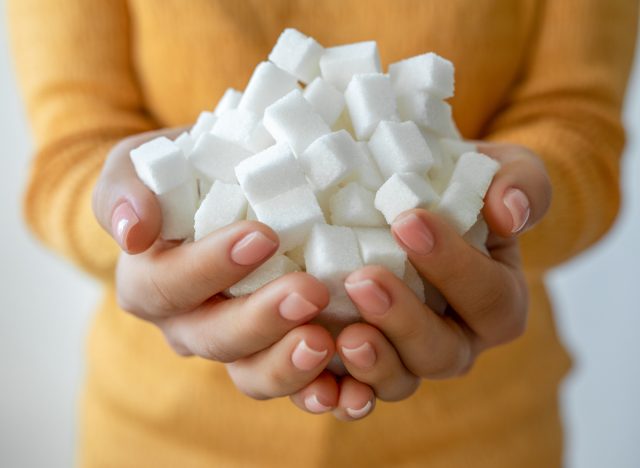Many individuals make New Year’s resolutions each year, only to struggle to keep up with them. The attraction of a fresh start continues to draw us in despite the challenges. Often, our failure to stick to these resolutions is due to setting overly ambitious goals or establishing strict, unattainable expectations. When our resolutions become too restrictive or unrealistic, they can quickly become detrimental and lead to disappointment.
Unhealthy resolutions typically involve extreme dietary changes, significant calorie reduction, or a fixation on achieving a specific weight. A warning sign is if your resolution feels like a complete departure from your current lifestyle. Experts recommend starting with small, sustainable changes as the key to forming enduring habits.
New Year’s resolutions should not feel insurmountable or destined for failure. Many individuals successfully reach their objectives by setting healthy, achievable goals that fit into their daily routines. To help you avoid unhealthy resolutions that may lead to disappointment, we’ve sought advice from nutrition experts on crafting smarter, more feasible goals for the upcoming year. For additional guidance, be sure to check out 8 Lifestyle Tips To Maintain Your Weight Loss.
Giving Up a Food Group

The keto diet, Atkins, and the vegan diet are all great examples of diets that eliminate food groups. But whether you’re eliminating carbs, fat, or protein, experts say that extreme restriction are harder to stick to in the long run.
“One of the unhealthiest New Years resolutions to make is to give up foods or food groups to be ‘healthier,'” says Kelsey Kunik, RDN, registered dietitian at Graciously Nourished. “Restricting foods increases the likelihood that once February rolls around, you’ll be binge eating these foods and creating an unhealthy relationship with them. Instead of giving up and cutting out foods, focus on adding more healthful foods to your diet.”
Setting Extreme Weight Loss Goals

Most people don’t realize that losing just one to two pounds per week is considered significant progress. While initial weight loss on a new diet can happen quickly and feel motivating, it often slows down over time, leading to frustration and the urge to give up.
“People feel discouraged and often give up when their New Year’s resolution is unattainable—for example, losing 20 pounds in a month,” says Brittany Scanniello, RDN, owner of Eat Simply Nutrition.
Alissa Palladino MS, RDN, LD, CPT adds, “Make sure that any changes you undertake in the pursuit of weight loss are behaviors you can realistically continue long-term. Otherwise, you can find yourself caught up in a cycle of yo-yo dieting and weight cycling, which actually leads to worse health outcomes.
Scanniello recommends opting for short-term, attainable goals to meet your long-term weight loss goals, such as “eliminating soda and other sugary drinks [from your diet], incorporating more exercise at least five days a week, and limiting fast food to no more than once a week.”
Fixating On a Specific Number On the Scale

While having a goal weight can help guide your efforts, obsessing over a specific number on the scale can set you up for frustration and unhealthy behaviors. Weight loss requires patience, practicality, and a focus on overall health—not a race to achieve rapid results.
“When you set an unrealistic weight loss goal, it can lead to individuals taking extreme measures to cut calories or following fad diets that are difficult to maintain,” explains Mandy Tyler, M.Ed., RD, CSSD, LD. This can result in an excessive and unhealthy fixation on the scale.
This fixation creates a lose-lose scenario: Either you give up on keeping this New Year’s resolution, leaving you with a sense of defeat, or you go to extreme measures that will inevitably put your health at risk just to hit your target. Instead of focusing solely on a number, aim for smaller, sustainable lifestyle changes that promote gradual, maintainable weight loss and overall well-being.
Going From No Exercise to Daily Exercise

Exercise may be a great new habit for you to focus on in the new year if you currently do not include much physical activity in your daily routine. At the same time, many people get overzealous with their exercise goals and decide to go every day or as often as they can. This can quickly lead to burn out and giving up before you’ve built a consistent habit around exercise.
If this sounds like you, you might be struggling with an all-or-nothing mindset; you’re either going to the gym every day, or if you miss one day you scrapped the whole week because you’ve already “failed.” However, taking a moderate approach to exercise and gradually accelerating your frequency of workouts over time can help keep this resolution.
Overhauling Too Many Habits at Once

Tackling nutrition and exercise habits simultaneously can be overwhelming, especially when trying to make significant changes all at once. As a dietitian, I recommend choosing a handful of habits to get started—typically three or less at one time is the sweet spot. Slow and steady wins the race here, so don’t be afraid to start small and build gradually. Sustainable progress is far more rewarding than setting unrealistic goals and feeling like you’ve fallen short.
“Making too many diet changes all at once can lead to feeling frustrated and deprived,” advises Kim Kulp, RDN, owner of the Gut Health Connection. “Instead, focus on one small change at a time. Do you want to eat more plants? Try adding one new plant food a week. Once this feels like a regular eating habit, you can add another. Trying to cut back on sugar? Instead of avoiding all of it, allow yourself a small dessert once or twice a week. This way you’re less likely to crave it to the point of overindulging, making long-term resolutions more attainable.”
By focusing on incremental changes, you can build healthy habits that feel achievable and sustainable, setting yourself up for long-term success.
Fasting or Cleanses

Intermittent fasting and juice cleanses have gained popularity in recent years, with some people swearing by their results. However, research suggests that fasting not necessarily superior to other forms of calorie restriction. Many people feel lightheaded, have low energy, and get extra hungry when they attempt fasting or a cleanse. Pushing your body past the point of hunger typically never bodes well long-term. It’s going to be really hard to maintain a diet that keeps you feeling hungry day after day.
“One of the worst resolutions I see is participating in a juice cleanse,” says Jess DeGore RD, CDCES, a dietitian and diabetes educator. “Juice cleanses are not only unsustainable, but they can be dangerous. Common side effects of juicing include electrolyte losses, fatigue, headaches, and nausea. Juice cleanses can also disrupt your digestion, because they’re high in sugar and low in fiber, protein, and fat. So unless your New Year’s resolution includes spending more time in the bathroom or stomach pain, this is not a great resolution.”
Rather than relying on drastic measures like fasting or cleanses, consider focusing on balanced, sustainable changes that nourish your body without deprivation.
Striving to Look Like a Celebrity—or Someone You Know

It’s easy to idolize someone who’s gone through a major transformation, whether it’s a celebrity or someone in your life. While drawing on others’ success can offer inspiration, if you’re striving to look exactly like them or a specific body type, you’ll likely just end up feeling disappointed.
“Appearance related goals are the worst! Body size goals may not be physically attainable based on a person’s genetics. Bodies come in different shapes and sizes along with various health conditions like hypothyroidism, PCOS, and chronic stress, which can make weight loss extremely challenging,” says Dani Lebovitz, MS, RDN, CSSD, CDCES, founder of Kid Food Explorers and author of Where Does Broccoli Come From? A Book of Vegetables.
Instead of chasing a certain weight or size, Lebovitz recommends focusing on habits that help you look and feel your best. “Try adding a strength training day to your weekly routine to boost your metabolism, eating three consistent meals and two snacks to manage your blood sugar, or incorporating a daily meditation moment to manage your stress,”she suggests.
Recycling Last Year’s Resolutions

It’s totally normal to feel regret over getting sidetracked from last year’s goals, and it’s OK to want a do-over for last year’s failed New Year’s resolution commitment. However, before you jump right into recommitting to your goals from the previous year, take a moment to meditate on why these goals did not come to fruition in the first place. Some reflection here will allow you to acknowledge the challenges and roadblocks that popped up and prevented you from achieving the goals.
If you still feel strongly about pursuing the same goal, use the lessons from the past year to approach it with fresh strategies and a more realistic plan. At the same time, you also don’t want to fall into the trappings of history potentially repeating itself. So to avoid this and fully embrace the opportunity to restart in the new year, you should challenge yourself with a fresh set of attainable, healthy New Year’s resolutions.





